End of times? ‘Apocalyptic’ locust swarms fill skies of Mexico leaving people fearing Armageddon is near
The skies over southeastern Mexico darkened last Tuesday afternoon, as miles-long swarms of locusts engulfed Mérida, the capital of Mexico's Yucatán state.
One Latin American newspaper covering the incident quoted Revelation 9:3, “And out of the smoke came locusts on the earth, and authority was given to them as to the scorpions of the earth.”
But local officials were less dire, telling reporters that the locusts were expected to finish passing through the city in about two days without endangering local crops.
Technically known as the Central American locust (CAL), the insect is native to the region and has struck the Yucatán state capital from the plant-rich countryside to the northwest.
The state of Yucatán, best known as the home of the famous Chicxulub crater that heralded the apocalyptic end of the dinosaurs, is located far south of the US-Mexico border.
The skies over Mexico darkened on Tuesday, as miles-long swarms of locusts engulfed Mérida, the capital of Yucatan state. One Latin American newspaper covering the incident quoted Revelation 9:3, “And out of the smoke came locusts on the earth.”
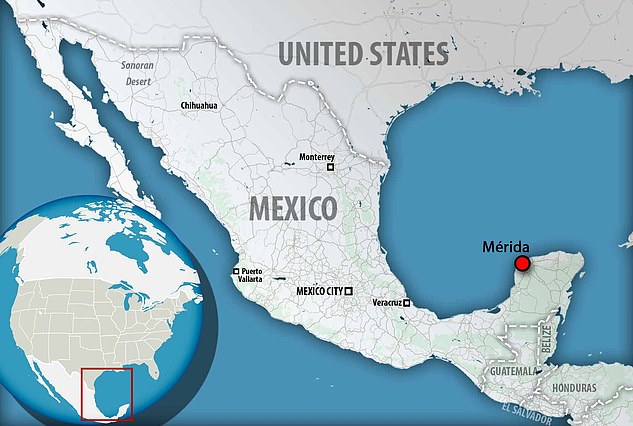
The state of Yucatán, home to the Chicxulub crater that heralded the end of the dinosaurs, is located far south of the border between the United States and Mexico. The American Southwest faced 'biblical' waves of Mormon cockroaches this year, but there's no sign the Mérida locust swarm will reach the US
“I will never open my mouth again!” One local Published to X (formerly Twitter).
The poster, described on the platform as a local teacher, joked that researchers in Mérida were “barely studying the Chicxulub crater” and were already looking for another apocalyptic strike.
While the American Southwest has suffered “biblical” influxes of millions of Mormon cockroaches, killer bees and other insects in the past year, there is no sign that the Mérida locust swarm will reach the United States yet.
However, last year, a research initiative at Arizona State University came to the conclusion that the density of locust swarms is likely to “increase dramatically” around the world due to climate change — threatening crops and increasing food prices.
According to local news reports from com. publimetroThe locust swarms were at their worst in the western and northern areas of the state Capitol.
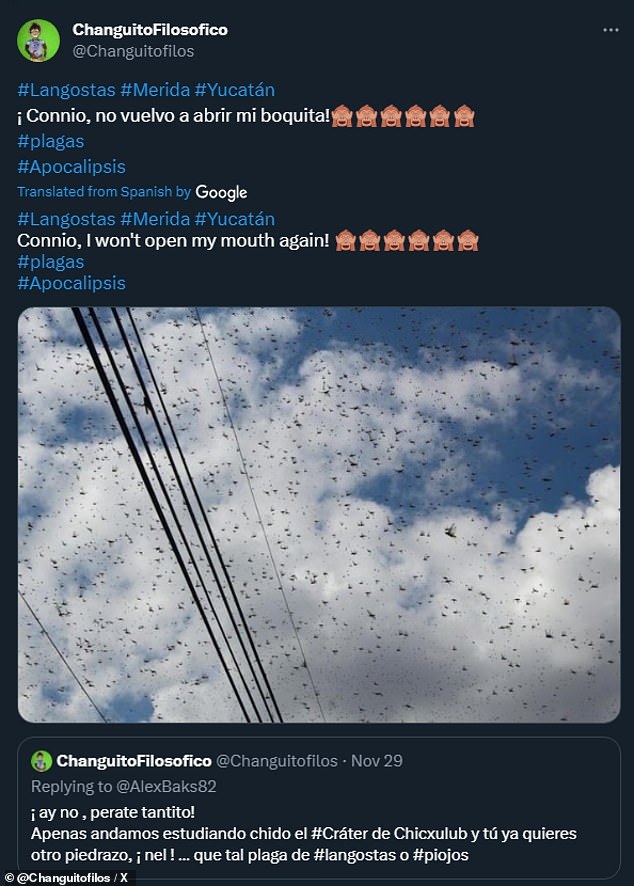
“I will never open my mouth again!” A local resident posted on X (formerly Twitter). The poster, a local teacher, joked that local researchers have “barely studied the Chicxulub crater” and are already looking for another horrific hit in this locust plague
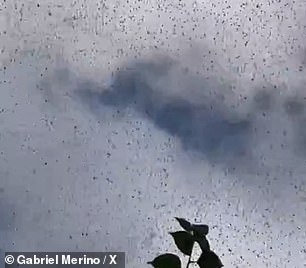
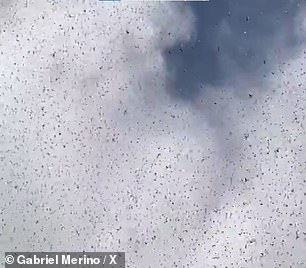
Yucatan often suffers from S.picifrons The locust swarms, which can consume 30 tons of plants per day, are affecting 14.6 million acres of land, Mario Bout Bisch, the state's locust program coordinator, said in a recent report, adding that “CAL is an ancient pest in Mexico.”
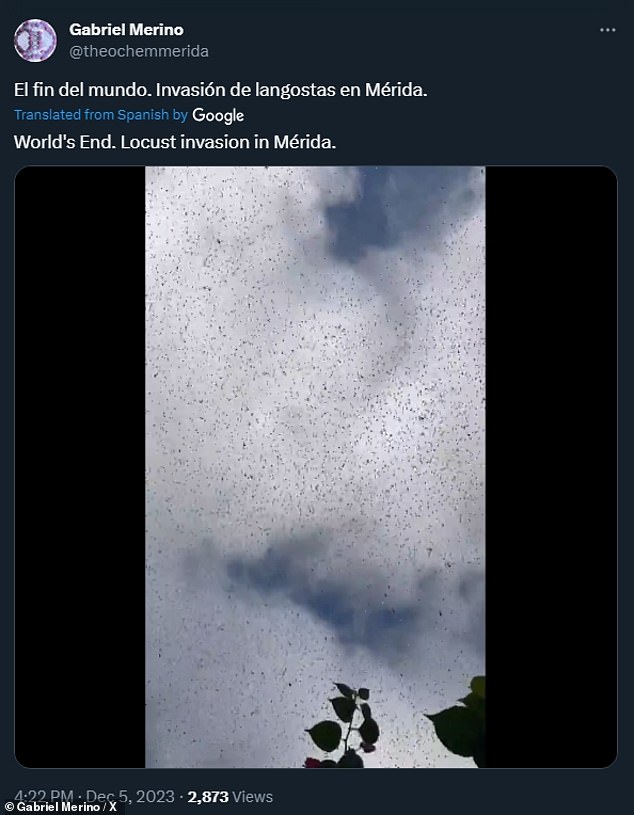
A video of the swarms was posted Tuesday afternoon on Facebook by resident Gonzalez Jose and local theoretical chemist, Professor Gabriel Merino (whose Twitter post or X appears above). Merino runs the Merino Laboratory at the Centro de Investigación y de Estudios Avanzados Unidad Mérida
But the insects known as the Central American locust (CAL) or… Schistocerca piceifronshave also been spotted in nearby smaller clouds such as Chuburna, Villas Oriente, Temozón Norte, and Colonia Gonzalo Guerrero.
Yucatan often suffers from S.picifrons Locust swarms, which can consume 30 tons of plants per day, affect 14.6 million acres of land, Mario Bout Bisch, the state's locust program coordinator, said in a recent report.
“CAL is an ancient pest in Mexico,” Butt Pich, who works for the Yucatan State Plant Protection Commission, said in the report, published last February. Journal of Orthoptera Research.
Climatic conditions, such as the El Niño Southern Oscillation (ENSO) state, the current condition of native plants and the insect's natural predators, are all indicators that Poot-Pech hopes to use to predict future locust outbreaks.
Videos of the swarms were posted Tuesday afternoon on Facebook by resident Gonzalez José and local theoretical chemist, Professor Gabriel Merino, who runs the Merino Laboratory at the Centro de Investigación y de Estudios Avanzados Unidad Mérida.
“The end of the world” ('El fin del mundo.) Merino posted to X, perhaps as a joke.
“Locust invasion in Mérida.” (The invasion of Langostas in Mérida.')
(Tags for translation)dailymail
